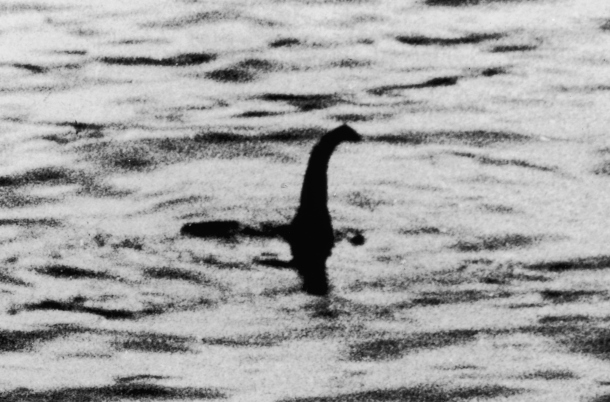Beyond the Headlines
Air Date: Week of July 22, 2022

President Joe Biden meets with Saudi Arabian Crown Prince Mohammed bin Salman at Alsalam Royal Palace in Jeddah, Saudi Arabia, on July 15. (Photo: Middle East Monitor, CC BY-NC-SA 4.0)
Environmental Health News editor Peter Dykstra joins host Bobby Bascomb to discuss Saudi Arabia’s investment in the U.S. petrochemical industry. They also look at why the Great Salt Lake in Utah has reached its lowest level ever recorded. And from the history books, a look back at the origin story of a popular legend: the Loch Ness Monster.
Transcript
CURWOOD: It’s Living on Earth – I’m Steve Curwood.
BASCOMB: And I’m Bobby Bascomb. And it's time for a trip now beyond the headlines with Peter Dykstra. Peter's an editor with Environmental Health News. That's ehn.org and dailyclimate.org. Hey there, Peter, what do you have for us this week?
DYKSTRA: Well, hi, Bobby, there's a pretty big side note to President Biden's recent visit to Saudi Arabia. There was a lot of fuss over that with the Saudi's human rights record, and whether or not in the era of the climate crisis, that the president should be going and making nice with a country over oil. And that seems to be exactly what he did. But even if that didn't happen, the Saudis are heavily invested in petrochemical plants, the part of oil and gas that make our plastic, all over the U.S. in Texas, in Louisiana, in Pennsylvania and elsewhere.
BASCOMB: Yeah, I mean, Saudi Arabia is the world's second largest producer of oil after only the United States. So, it stands to reason that they would have interest in, you know, petrochemical industry. That's sort of the, the oil industry's Plan B, if we're not going to burn enough oil in our gas tanks.
DYKSTRA: Business is business. The oil and gas industry is smart enough to see the writing on the wall, and fossil fuel production for energy is on the outs. Maybe not this year, maybe not 20 years from now, but eventually, if we're to be serious about dealing with climate change and keep places like Portugal from turning 117 degrees Fahrenheit, which it did last week.
BASCOMB: Well, what else do you have for us this week?
DYKSTRA: Salt Lake City and the Great Salt Lake; the lake is a beautiful place. I was out there in the 1980s, when the lake had reached record high levels due to record snowfall the previous few winters. Right now, the Salt Lake is at its lowest level ever. It's dropped 20 feet since the 1980s, which threatens the ecology, the appearance and everything else about this very odd and unique ecological wonder.

Antelope Island, protected by Antelope Island State Park, becomes a peninsula when the Great Salt Lake reaches extremely low water levels. (Photo: Annica Beckman, Pixabay)
BASCOMB: And you've got to think, if there's so much less water in the lake, all of the salt that makes Great Salt Lake must be more concentrated? I should think that that's gotta make it even more difficult for the unique plants and animals that live there to survive.
DYKSTRA: Yeah, there's less water in the lake because of persistent drought, because of some very low levels of winter snowfall. And also, as the agriculture industry grows, they're diverting more water from the freshwater streams that feed the Great Salt Lake.
BASCOMB: Well, let's hope things can turn around. I've also read that Utah is one of the fastest growing states in the country, putting more demand on the water resources that they do have. It's quite a difficult situation.
DYKSTRA: That's a problem throughout the West.
BASCOMB: Indeed. Well, what do you see for us in the history books this week?
DYKSTRA: 1933, one of the greatest probable hoaxes in the history of nature got its start. July 22, 1933, to be precise. Mr. and Mrs. John Mackay were travelling along the shores of Loch Ness hoping to get some fishing in and they said they saw a dinosaur cavorting in Loch Ness, hence the birth of the legend of the Loch Ness Monster. A couple other people came forward and said they'd seen the dinosaur too. There was one very famous kind of shady looking photograph of this long, crooked necked creature reaching up out of the loch. But what's happened since then, is a remarkable tourist industry based on something that scientists tell us doesn't exist: the Loch Ness Monster.

The famous photo of the Loch Ness Monster, claimed to be taken by British surgeon Colonel Robert Wilson on April 19, 1934 and published in London’s Daily Mail. (Photo: Christian Spurling, Flickr, CC BY-NC-ND 2.0)
BASCOMB: I've read that Loch Ness has a lot of eels. And maybe it could just be a very large eel that people are seeing? Or, or maybe this just makes more sense if you want to keep bringing in that tourist money to have a sighting every few years.
DYKSTRA: Yeah, it kind of helps to have a sighting and keep the tourist trade going, and the T-shirts and everything else. An eel as big as what is purportedly shown in that famous picture, I don't think so. Maybe there was a little bit too much Scotch being consumed. But the Loch Ness Monster, as a legend, just like Bigfoot and Sasquatch, are here to stay.
BASCOMB: Aren't our lives a little richer because of them? Really. It's nice to think, well, maybe there's some things in nature that we don't quite understand.
DYKSTRA: Well, to be sure there are people running tourist concessions whose lives are a little richer thanks to the Loch Ness Monster.
BASCOMB: That's the truth. All right. Well, thanks, Peter. Peter Dykstra is an editor with Environmental Health News. That's ehn.org and dailyclimate.org. We'll talk to you again real soon.
DYKSTRA: All right, Bobby. Thanks a lot, and we'll talk to you soon.
BASCOMB: And there's more on these stories on the Living on Earth website. That's loe.org.
Links
The New York Times | “Biden’s Fraught Saudi Visit Garners Scathing Criticism and Modest Accords”
Reuters | “Utah's Great Salt Lake Is Drying Out, Threatening Ecological, Economic Disaster”
BBC News | “Loch Ness Monster: Is Nessie Just a Tourist Conspiracy?”
Living on Earth wants to hear from you!
Living on Earth
62 Calef Highway, Suite 212
Lee, NH 03861
Telephone: 617-287-4121
E-mail: comments@loe.org
Newsletter [Click here]
Donate to Living on Earth!
Living on Earth is an independent media program and relies entirely on contributions from listeners and institutions supporting public service. Please donate now to preserve an independent environmental voice.
NewsletterLiving on Earth offers a weekly delivery of the show's rundown to your mailbox. Sign up for our newsletter today!
 Sailors For The Sea: Be the change you want to sea.
Sailors For The Sea: Be the change you want to sea.
 The Grantham Foundation for the Protection of the Environment: Committed to protecting and improving the health of the global environment.
The Grantham Foundation for the Protection of the Environment: Committed to protecting and improving the health of the global environment.
 Contribute to Living on Earth and receive, as our gift to you, an archival print of one of Mark Seth Lender's extraordinary wildlife photographs. Follow the link to see Mark's current collection of photographs.
Contribute to Living on Earth and receive, as our gift to you, an archival print of one of Mark Seth Lender's extraordinary wildlife photographs. Follow the link to see Mark's current collection of photographs.
 Buy a signed copy of Mark Seth Lender's book Smeagull the Seagull & support Living on Earth
Buy a signed copy of Mark Seth Lender's book Smeagull the Seagull & support Living on Earth

